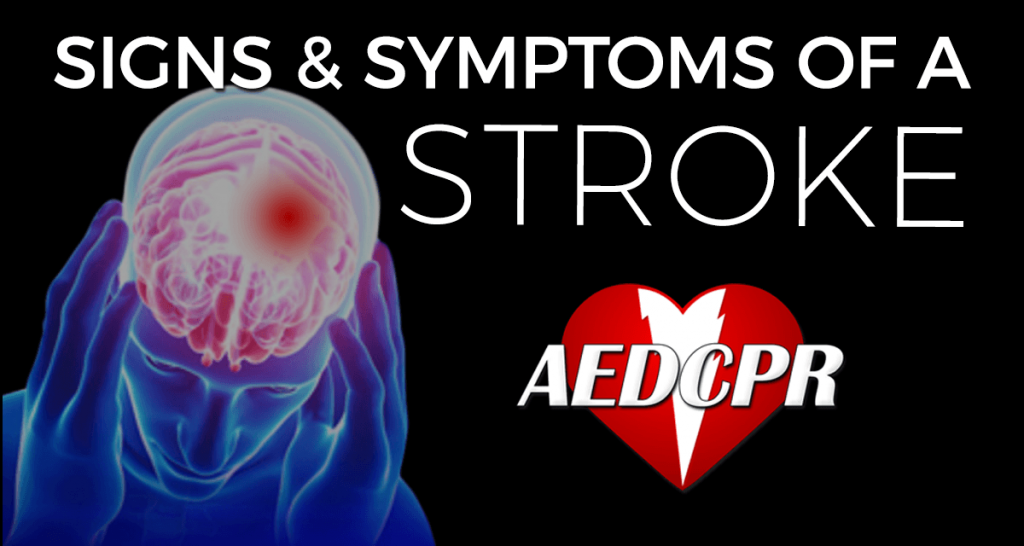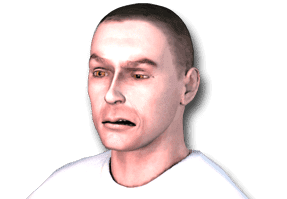
A stroke is a serious medical emergency. Brain cells begin to die within minutes of a stroke starting, so it is important to recognize stroke signs and symptoms as soon as possible and take action. Quick action is important for reducing permanent damage and promoting recovery.
Major Warning Signs and Symptoms of a Stroke
Symptoms and signs of a stroke are sudden and can occur without warning. Strokes can present with many symptoms. However, some symptoms are more common than others.
In most cases, stroke victims feel a sudden onset of numbness in their face, arms, or legs. For the most part, this occurs on one side of the body. This is because each half of the brain controls the opposite half of the body. For example, if someone has a stroke in the right half of their brain, they may feel numbness on the left side of their face.
One classic symptom of a stroke is face drooping, particularly on one side of the face. This happens when the nerves that control the facial muscles become damaged causing that side of the face to drop. This is easier to notice on the eyelids and corners of the mouth. If you suspect someone is having a stroke, ask them to smile.

Stroke victims may have difficulty speaking or understanding speech. In some cases, stroke victims are not able to understand speech, as if the person they were listening to was speaking a foreign language. In the same vein, they may have trouble paying attention, especially to complex phrases.
Stroke victims may have trouble expressing ideas or retrieving words, or speaking too slowly. One less severe cause of this slurred speech is loss of control over facial muscles.
Often, stroke victims will experience headaches, blurred vision in one or both eyes, dizziness, and difficulty walking. As a result, someone having a stroke may appear to be very uncoordinated and unsteady.
Stroke Symptoms in Women
Stroke symptoms can present differently in women. In addition to the signs listed above, women may show other less-obvious symptoms. Women who are having a stroke may feel fatigue or weakness throughout their whole body. Additionally, women may experience nausea.
These symptoms are associated with many, much less serious conditions. As a result, they are often not recognized as being stroke symptoms. These symptoms should not be ignored, especially if they are present with the other major stroke symptoms (i.e., face drooping, slurred speech).
Other signs and symptoms
Stroke victims may have trouble reading or understanding text. Cognitive impairment is common during stroke and can be a lasting side effect.
There is a common myth that during a stroke, the victim will perceive the smell of burning toast. The medical term for this is phantosmia; an olfactory hallucination. In other words, a phantom smell, or a smell that isn’t really there.
This can happen to stroke victims, depending on what part of the brain is damaged during the stroke, but it does not always happen. Furthermore, the perceived smell can present as a number of things, not just burning toast.
What causes a Stroke?
A stroke is also known as a cerebrovascular accident (CVA). The two main types of stroke are ischemic and hemorrhagic.
Ischemic strokes are the most common. They occur when a blockage (such as a blood clot) completely blocks a blood vessel in the brain. This causes that part of the brain to be deprived of blood supply and oxygen.
Hemorrhagic strokes occur when a blood vessel in the brain bursts or leaks into the brain’s tissue, causing damage.
In both cases, brain cells begin to die within minutes from the change in blood flow to the brain. There are many different risk factors for a stroke, such as high blood pressure, that can increase the chances of having a stroke.
What to do in the event of a Stroke
If you think you or someone else is having a stroke, it is important to call 911 as soon as possible. Using the acronym F.A.S.T. to remember the major signs of a stroke can help you quickly. Recognizing the signs fast is critical:
F: Face Drooping and numbness. Have the victim try to smile and see if one side of the face droops.
A: Arm weakness. Check if one arm is weak or numb. Have the victim try lifting their arms over their head, and note if one arm drifts downward.
S: Speech difficulty. Check if speech is slurred. Try to have the victim recite a simple sentence.
T: Time to call 911. Call 911 if you think you or someone else has any of these symptoms. Also, call 911 if the victim is unresponsive.
Remember, time is a very important factor. The faster a stroke victim receives treatment, the better the chance of survival.
The best way to learn more about recognizing the signs and symptoms of a stroke, as well as what to
